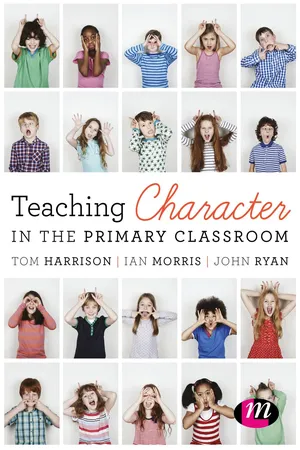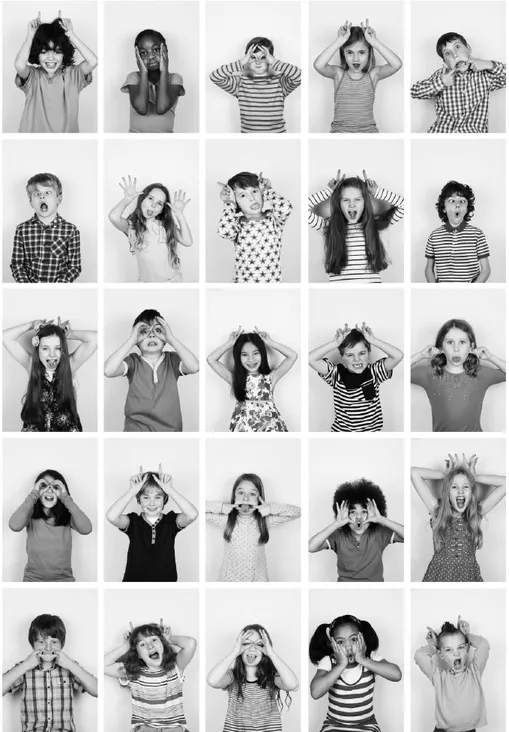In this chapter you will:
- read about why character matters;
- be introduced to character education;
- read a brief history of character education in the UK;
- be provided with an overview of the book.
Character Matters: The Elephant in the Interview Room…
Imagine this scenario…
You are on your way to achieving Qualified Teacher Status and you have managed to get an interview for your first teaching job in a primary school near where you live. You have done well in your training, your grades are good and you feel confident as you prepare for the interview. In the interview you demonstrate your knowledge of a range of topics including inclusion, safeguarding, attainment, behaviour, subject knowledge and progress – amongst others. You teach a good demonstration lesson. You feel quietly confident as you leave the interview…
You don't get the job…
You reconcile yourself with the thought that there were several other good candidates going for the job. But your mind won't let it go and you keep wondering what you did wrong in the interview. The answer might be you did nothing wrong, but the interviewers (fairly or unfairly) made a judgement about your character and decided that the character of one of the other candidates aligned more closely with the mission, aims, ethos and culture of their school.
The spoken (or often unspoken) reflections of the interviewers after you left the room are likely to have been questions such as: would you fit in the school?; what would you be like to be managed?; are you a team player?; are you likely to be resilient and adaptable when the going gets tough?; will you be supportive and caring towards the pupils?; what type of role model will you be for the pupils? These are the unspoken questions of character that are part and parcel of most interviews. Often this is with good reason, for as the Jubilee Centre's statement on teacher education and character education states (Jubilee Centre, 2015) ‘the single most powerful tool a teacher has to impact on a student's character is their own character’. After all, whether stated or not, good teachers are not those who can simply deliver good content but those who model good character in practice. As David Carr (2007) notes, ‘It is often said that we remember teachers as much for the kinds of people they were than for anything they may have taught us, and some kinds of professional expertise may best be understood as qualities of character’ (p.369).
Judgements of character are almost always the elephant in the interview room.
Of course, judgements of character are often subjective. This is why schools and other employers have increasingly more sophisticated interview programmes involving a series of activities designed to tease out a candidate's character and values and how they interact in group settings. However, in a traditional face-to-face interview you might be able to demonstrate you have the qualification, skills and knowledge for the job: but can you convince the panel you have the character?
Character matters in all of the myriad roles we play in our lives. Not just as a prospective employee trying to get a job, but also when we are actually doing the job. Likewise character matters in the many roles we play outside of work – as parents, relatives, neighbours and friends. Ultimately it is our character that determines how successfully we carry out these roles: whether we are compassionate to our neighbours, honest with our friends, courageous in our work or responsible in our parenting. Just as often we notice when people don't display these qualities of moral character as when they do. A quick trawl through almost any newspaper demonstrates this. Consider the list below of some of the bigger scandals that have taken place over the last few years:
- The banking crisis, where millions of pounds was lost through bankers bending and sometimes breaking the law.
- The Mid Staffordshire NHS Foundation Trust scandal, where the care and compassion of some of the nurses at Stafford Hospital was called into question.
- The Hillsborough tragedy, which exposed a police cover-up.
- Some MPs over-claiming on expenses.
- Some journalists at some newspapers hacking into private voicemails.
All these stories have questions of character at their heart. At some level in each of these stories, we see character flaws, or vices, being played out. They often provoke outrage in us, as the protagonists, either through negligence or bad will, are caught up in events which result in damage, loss or harm. We, in turn, are caught up in moral judgements about what has happened. Questions of character are inextricably bound up in the business of daily human life.
On the flip side, let's consider what makes a ‘good’ news story: athletes showing determination and grit to win an Olympic gold medal; the courageous acts of whistleblowers who expose wrongdoing in our public and private institutions; the public figure who does a good deed for charity, campaigns on an important issue or who gives away their money to good causes; the local hero who has made a difference to their community or the emergency worker who has shown bravery in a dangerous situation. Our fascination with and desire to celebrate stories such as these demonstrate to us the enduring appeal of outstanding character.
It is clear as we read the news that we understand what is right or wrong, good or bad. We understand from our own experiences that the virtues we display determine the outcome of our own personal stories and that therefore, character matters. If character matters to us as adults, this clearly implies the importance of the development of the character of young people and helps to explain why, as we will see below, character education is being taken increasingly seriously by both policy makers and teachers.
Not Just Another Fad: A Brief History of Character Education
Character education is not just another educational fad – and it certainly is not new. Good education from the beginning of time has included character education. It might not be called ‘character education’ and teachers might not even be aware they are developing character, but few primary school teachers would claim that they didn't hope to have a positive influence on the character of their pupils. After all, many teachers go into the profession wanting to make a difference and to positively transform the lives of young people. It might be argued that every day in every school, every teacher is educating their pupils in character. The key question is, are they doing it well or badly?
In order to explain the recent resurgence in interest in character education, it is helpful to understand the recent history of the subject. Although it may not always have been referred to as character education, there has been a long history of policy intentions – either explicitly or implicitly expressed – to develop the character in pupils in schools in the UK. In his book Education with Character, James Arthur pro...

